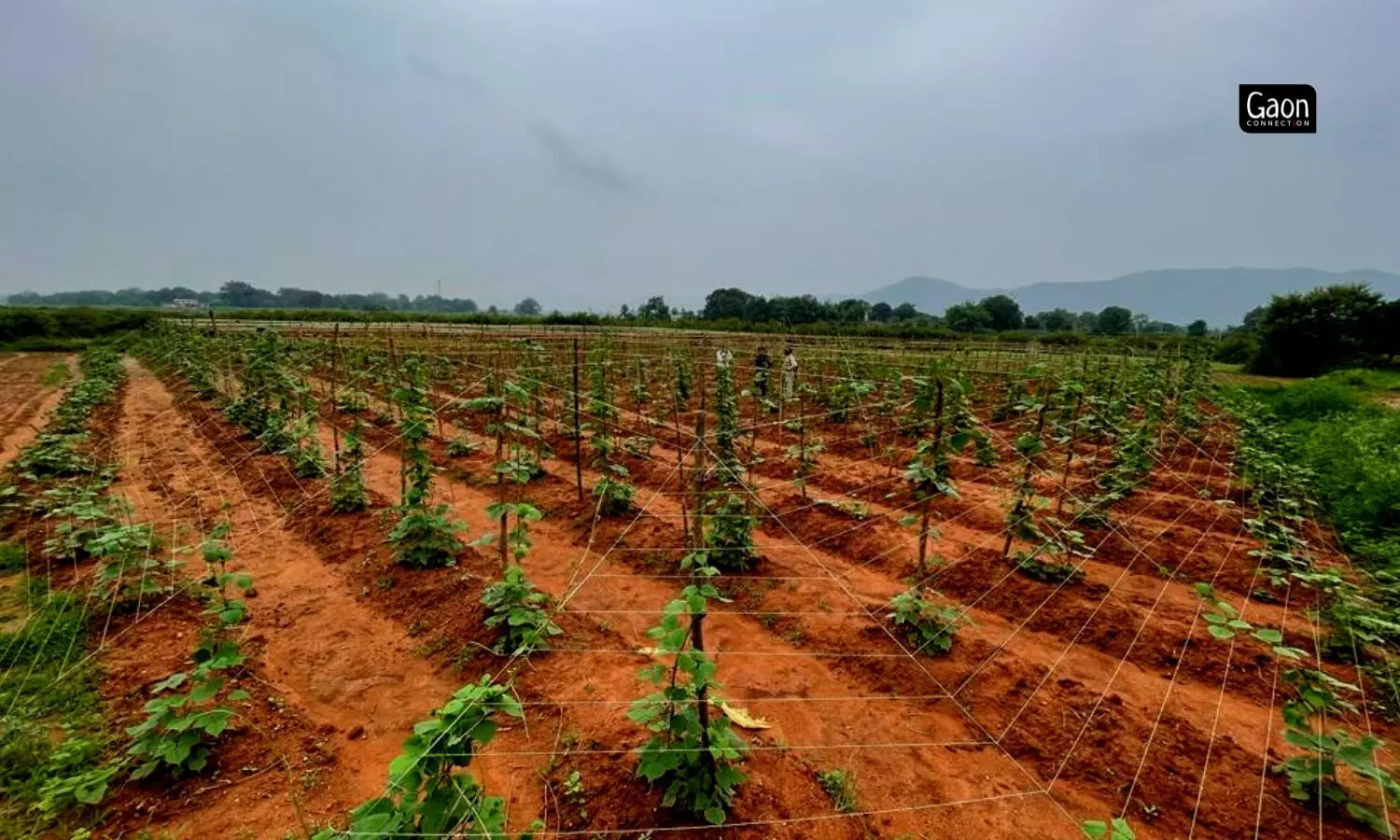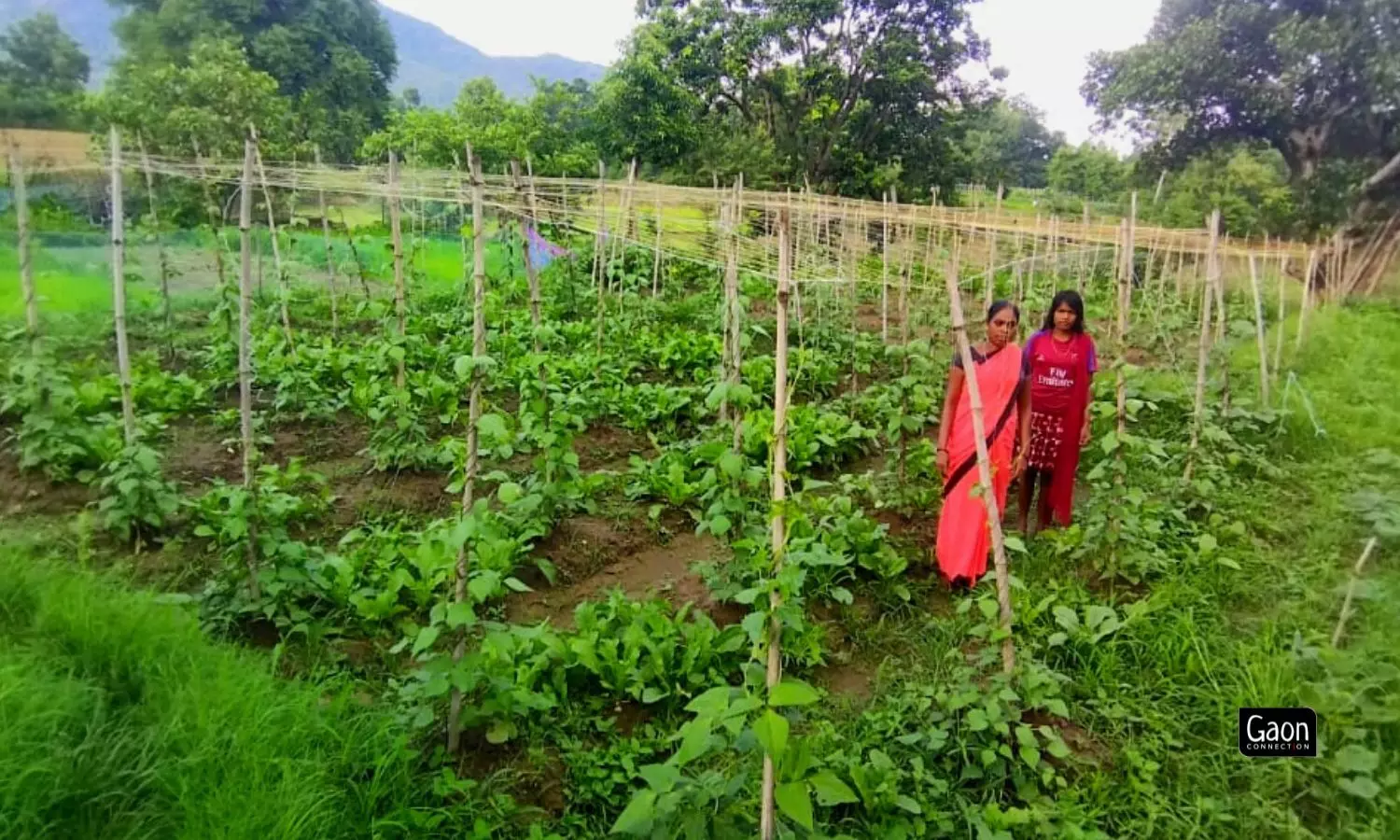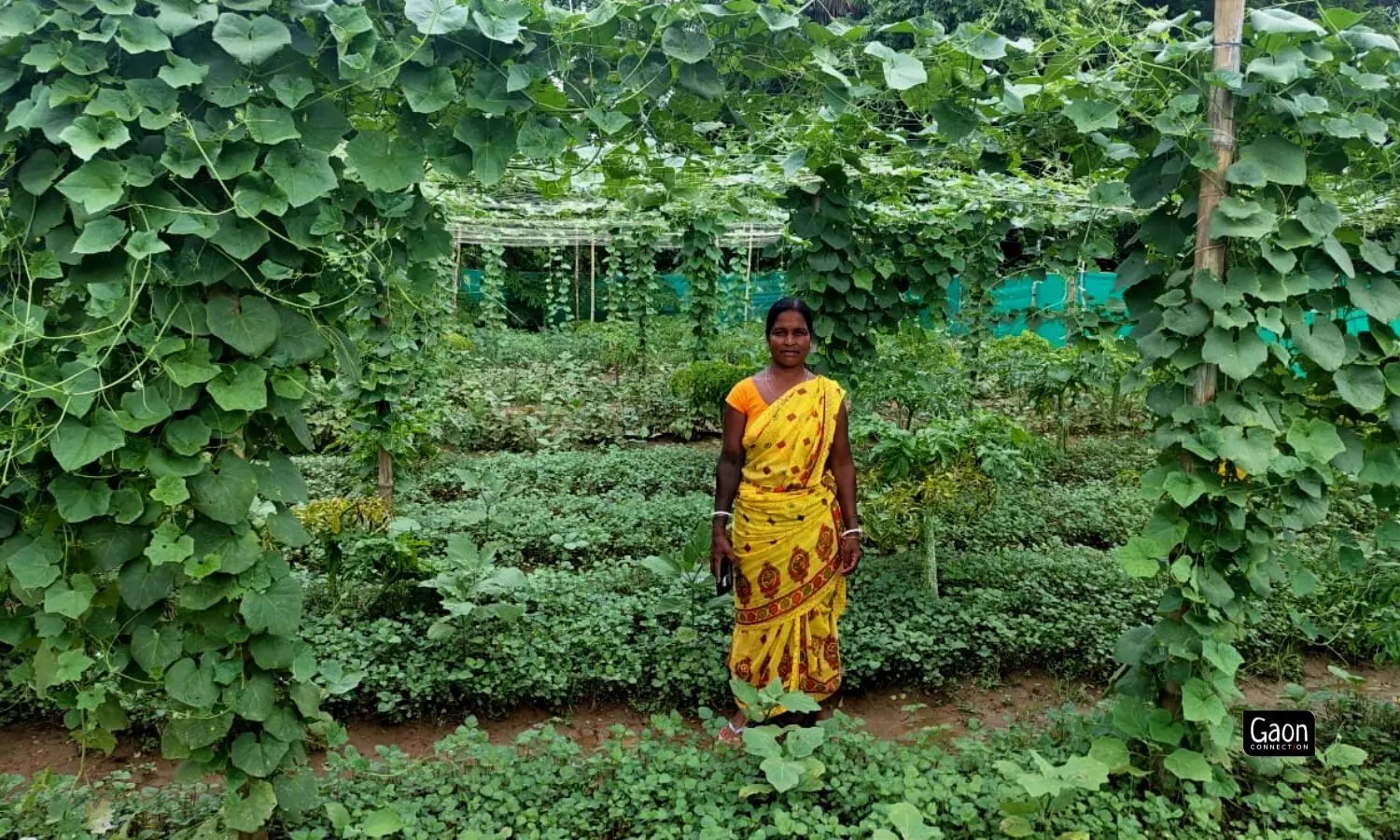Santoshini Hemran is a happy farmer. Last week she harvested 17 kilograms of bitter gourd which she then sold at Rs 40 per kilogram. Although the 35-year-old farmer from Duaria village in Dumka district, Jharkhand, owns 1.5 acres (0.6 hectare) of land, yet she grows multiple crops on it including lady finger, bottle gourd, turmeric, chillies, leafy greens, brinjal, tomatoes, and sometimes chickpeas.
This has been possible due to multilayer-farming that she adopted earlier this year and has been reaping considerable profit. Hemran said that she makes about Rs 8,000 a month by selling her harvest.
In multilayer farming, farmers can grow several crops simultaneously. Compatible plants of different heights are grown together on the same field at the same time. It is intercropping in which vertical space is utilised more effectively.

The main idea of this kind of farming is to plant different types of crops in one field and then use the remains from each crop as fertilisers for another.
New Delhi-based non-profit PRADAN (Professional Assistance for Development Action) has been training farmers in multilayer farming. Hemran is one of the thousands of farmers in Jharkhand who have taken up this new method of farming and have benefitted from it. Earlier these farmers cultivated only one crop at a time, which too was affected due to erratic weather.
Also Read: Uttar Pradesh: Fresh Trouble For Paddy Farmers As Rain Damages Ripened Crop
For instance, until March earlier this year, Hemran was barely able to make ends meet. She grew only tomatoes on her farm which barely got her any returns. She made up to Rs 3,000 a month and no more, she said.
But, ever since she has adopted multi-layer-farming earlier this year, her earnings have multiplied. The extra income she has been getting from growing multiple crops at the same time is better able to support her family of three children and her husband who is also a farmer.
PRADAN provides the farmers training and technical guidance through workshops. The non-profit works both with the central and state governments and has over the years contributed to programmes such as the National Rural Livelihood Mission.
“The workshops showed us how to optimise our farmlands. Earlier we only cultivated single crops, but now we grow multiple vegetables on it,” Hemran told Gaon Connection.
Nrusingha Sutar, a team coordinator of PRADAN based in Ranchi, Jharkhand, said that their team works closely with women farmers.

“We mobilise financially weak women farmers into groups and educate them on multilayer farming methods”, said Sutar
“We mobilise financially weak women farmers into groups and educate them on multilayer farming methods and several other approaches that are used to increase the yield and simultaneously earn better,” Sutar told Gaon Connection. The non-profit also distributes seeds to the women farmers for multilayer farming.
Explaining how multilayer farming works, Sutar said that the plot of land (however small) is divided into parts with raised strips (beds) that are four feet wide and have a four feet gap between them, on which main crops are grown.
Also Read: A cleric who is now a successful Dumba sheep farmer in West Bengal
Then a machan is created on which plants such as bottle gourd, bitter gourd and pumpkin are grown. Under their shade, spinach, coriander and other leafy vegetables are grown. Depending on the number of ‘beds’ available, tomatoes and brinjal are grown.
On the sides of the plot, ginger and turmeric are cultivated. And if there is space available around the plot, then papaya trees are also grown. “Drip irrigation is used to water the plants,” said Sutar.
Talking about the benefits of multilayer farming, Nityanand Dhal, Lead at Centre of Excellence in Agriculture, Noida, said: “The main idea of this kind of farming is to plant different types of crops in one field, and then use the remains from each crop as fertilisers for another.” The centre provides technical expertise, skills and training to promote incubate and scale agriculture entrepreneurship in India.
Shivratiya Devi, a farmer from Kathikund village of the Dumka district, has benefited from multilayer farming techniques. The 40-year-old farmer said that she earns up to Rs 8,000 a month by selling her fresh harvest.
When Gaon Connection spoke with Shakunti Devi, a 23-year-old farmer from Khamar village in Lohardaga district, she was sorting out her combined weekly harvest of coriander, spinach, radish, green chilli and beans that she grows in 0.15-acre land.

The workshops showed us how to optimise our farmlands. Earlier we only cultivated single crops, but now we grow multiple vegetables on it.
“Initially I grew only one crop — bottle gourd or chilli — and did not make more than two thousands rupees a month. Now I earn up to three to four times more,” said Shakunti Devi, who adopted multi-layer farming last year.
Also Read: In Poll-Bound Madhya Pradesh, Sugarcane Farmers are Angry
She regularly attends workshops in which farmers are trained on various aspects of multilayer farming. “The workshops are beneficial for us as now we have been able to grow different varieties of vegetables in one farmland. Also, it helps to avoid soil depletion by alternating different crops each year,” said Shakunti Devi.
Besides Jharkhand, PRADAN has been training farmers in multilayer farming in Bihar, Madhya Pradesh, West Bengal, Rajasthan and Chattisgarh.



















